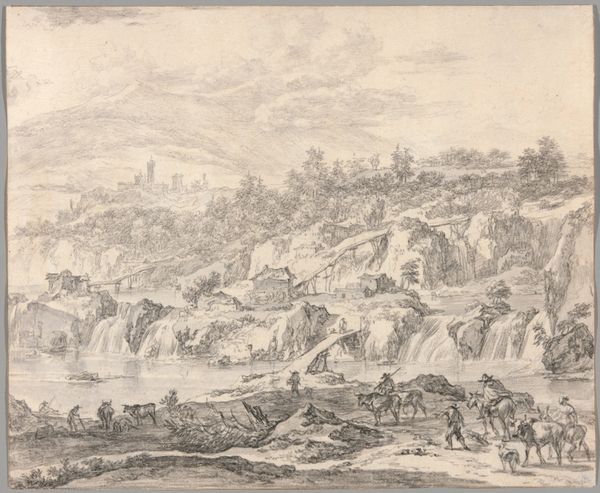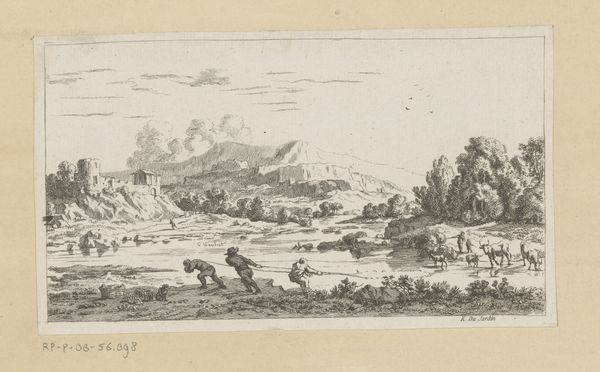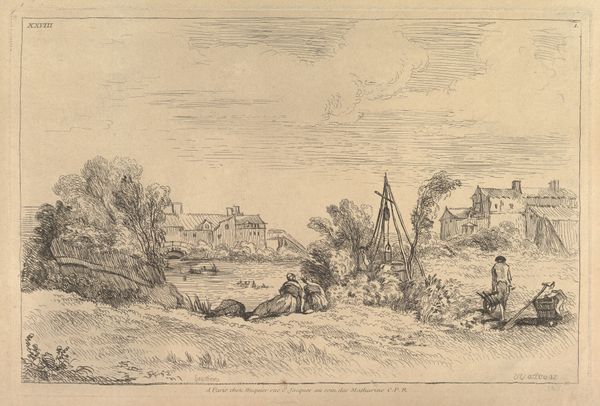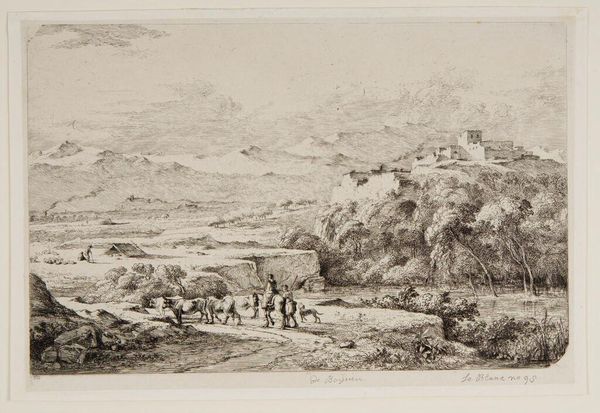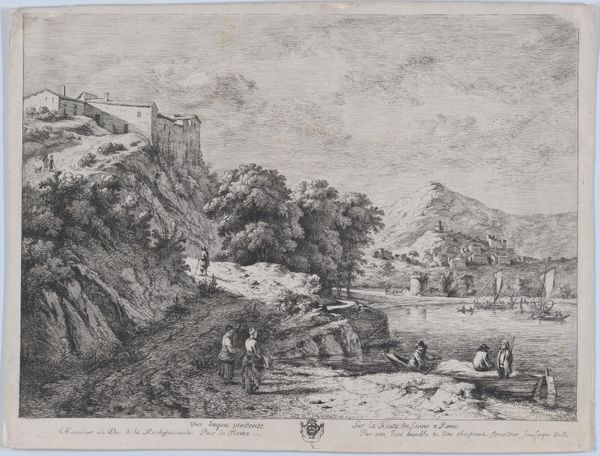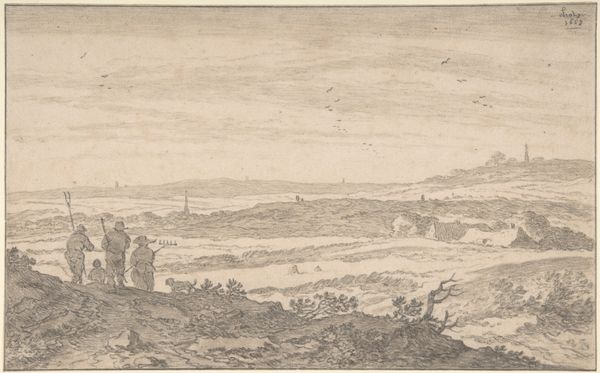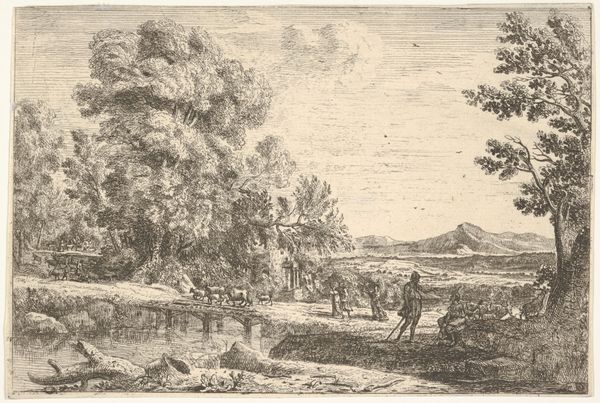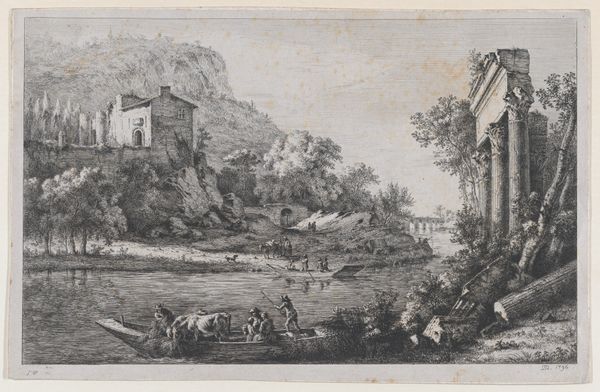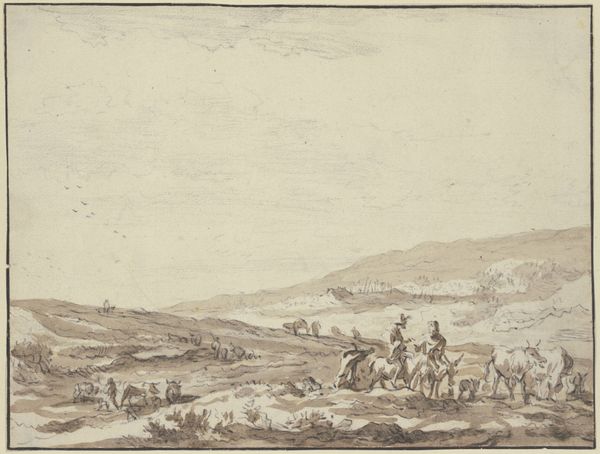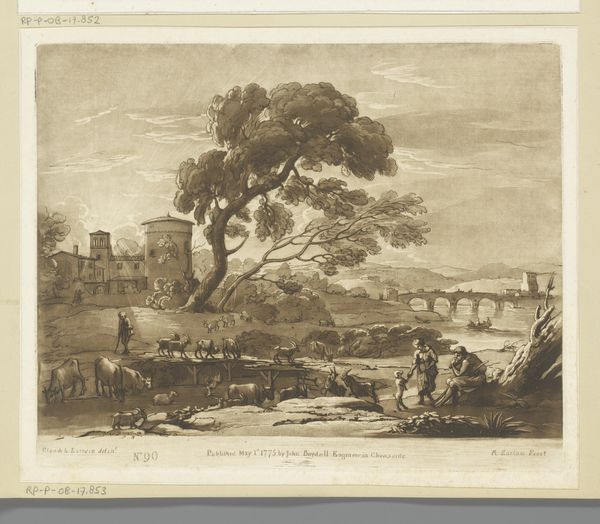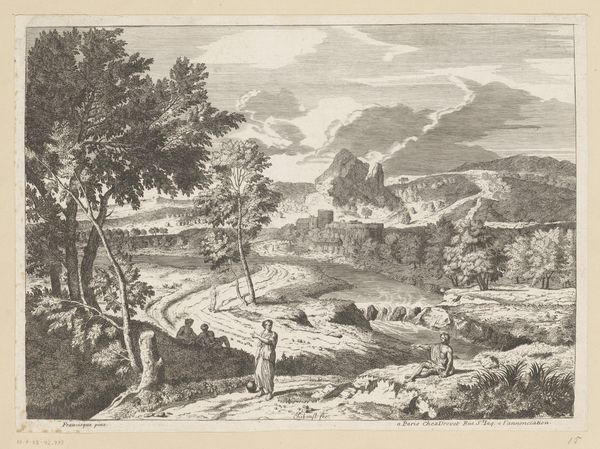
drawing, print, etching, pencil
#
drawing
#
neoclassicism
# print
#
etching
#
human-figures
#
dog
#
landscape
#
etching
#
pencil
#
horse
Dimensions: Sheet: 8 11/16 x 12 13/16 in. (22 x 32.6 cm) Plate: 8 1/2 × 12 11/16 in. (21.6 × 32.2 cm)
Copyright: Public Domain
Jean Jacques de Boissieu created this landscape print after Van der Cabel using etching, a printmaking technique that relies on acid to bite lines into a metal plate. Boissieu would have covered the plate with a waxy, acid-resistant ground, then drawn his design into it with a sharp needle. The plate was then immersed in acid, which ate away the exposed lines, creating grooves. After removing the ground, the plate was inked, and then wiped clean, leaving ink only in the etched lines. Finally, damp paper was pressed against the plate, transferring the image. The fineness of the lines speaks to Boissieu’s skill, and to the labor involved in creating such a detailed image. The printmaking medium also allowed for the wide distribution of images, catering to a growing market for art among the middle class, which meant a new source of income for artists. Looking at this print, it's important to remember that the artist isn't just representing a landscape, but also engaging with broader social and economic shifts related to the commercialization of art in the 18th century.
Comments
No comments
Be the first to comment and join the conversation on the ultimate creative platform.

